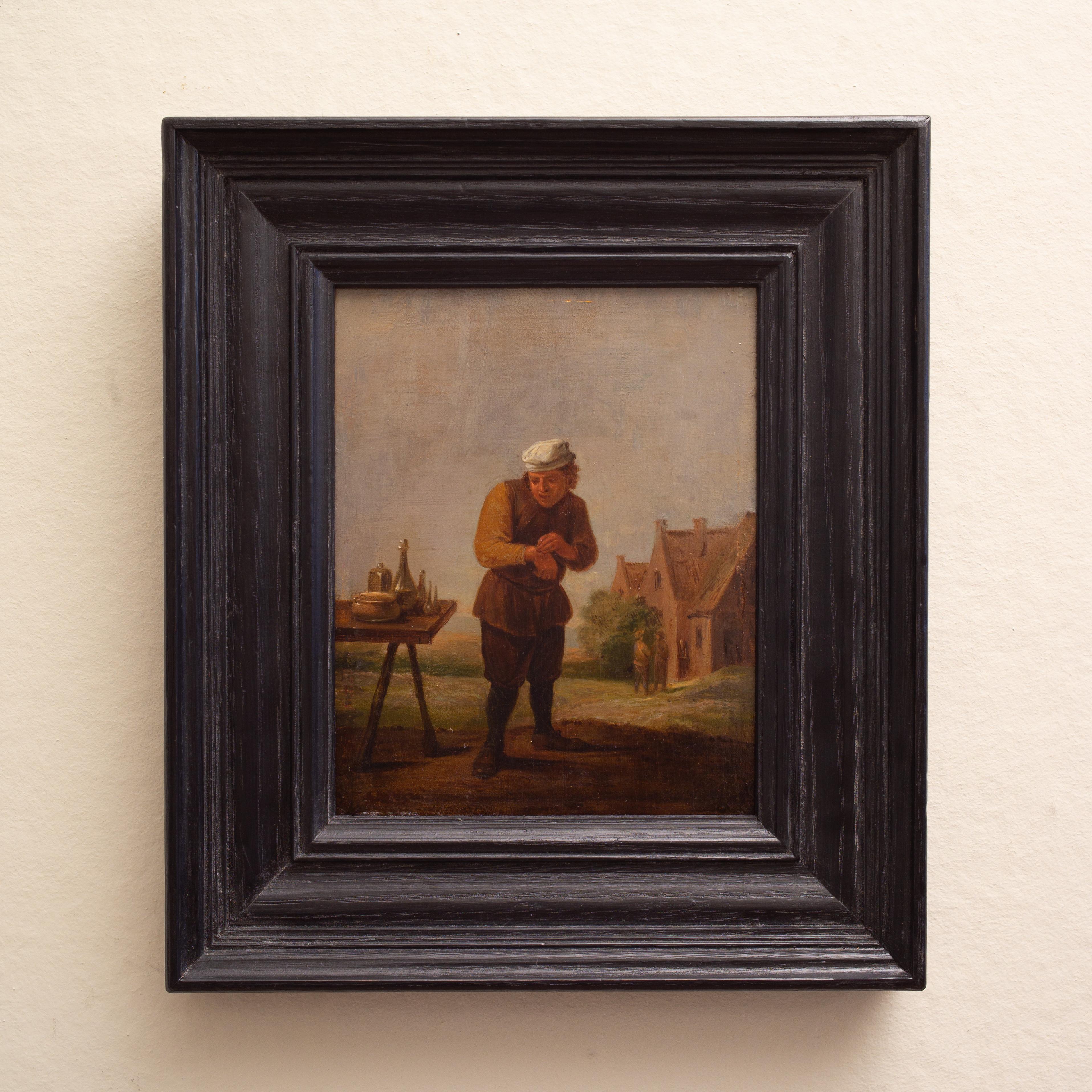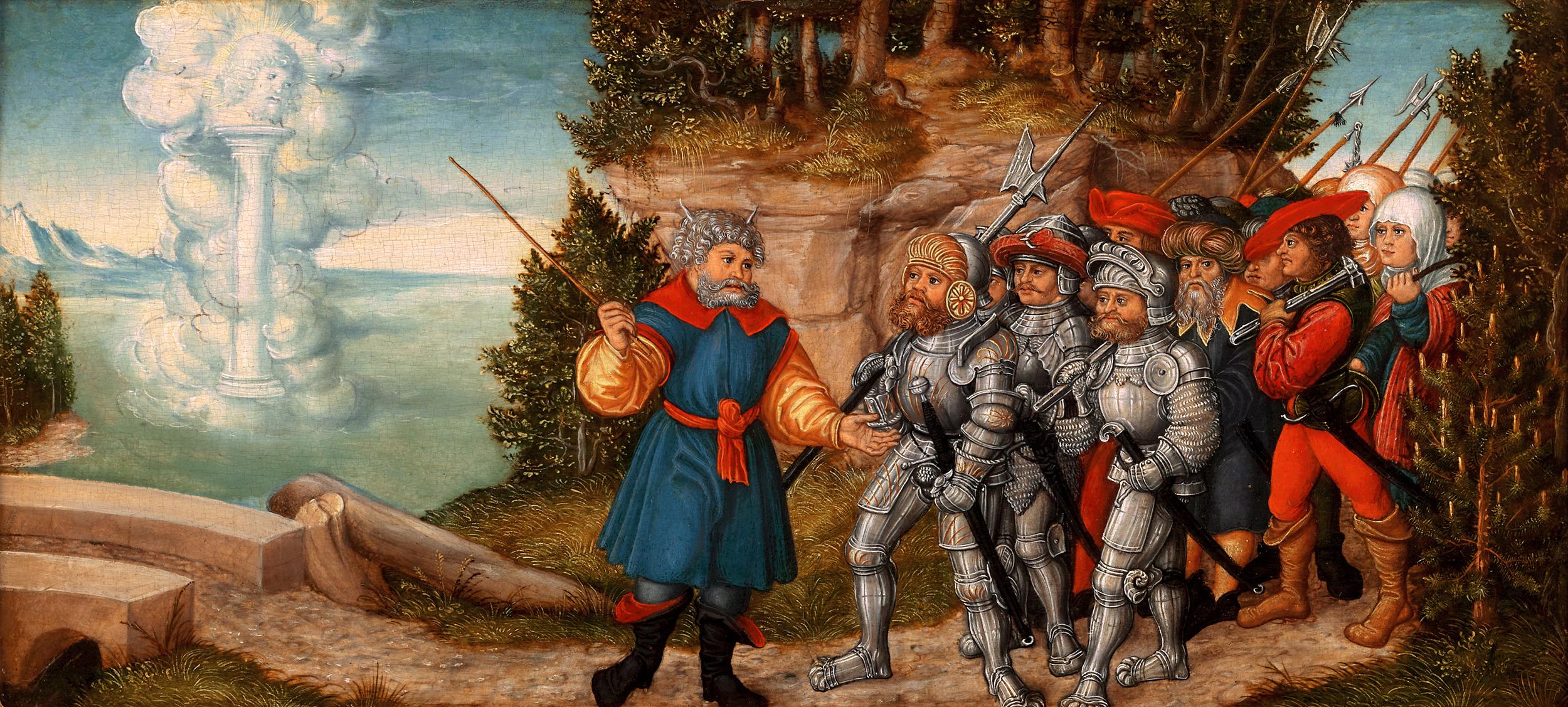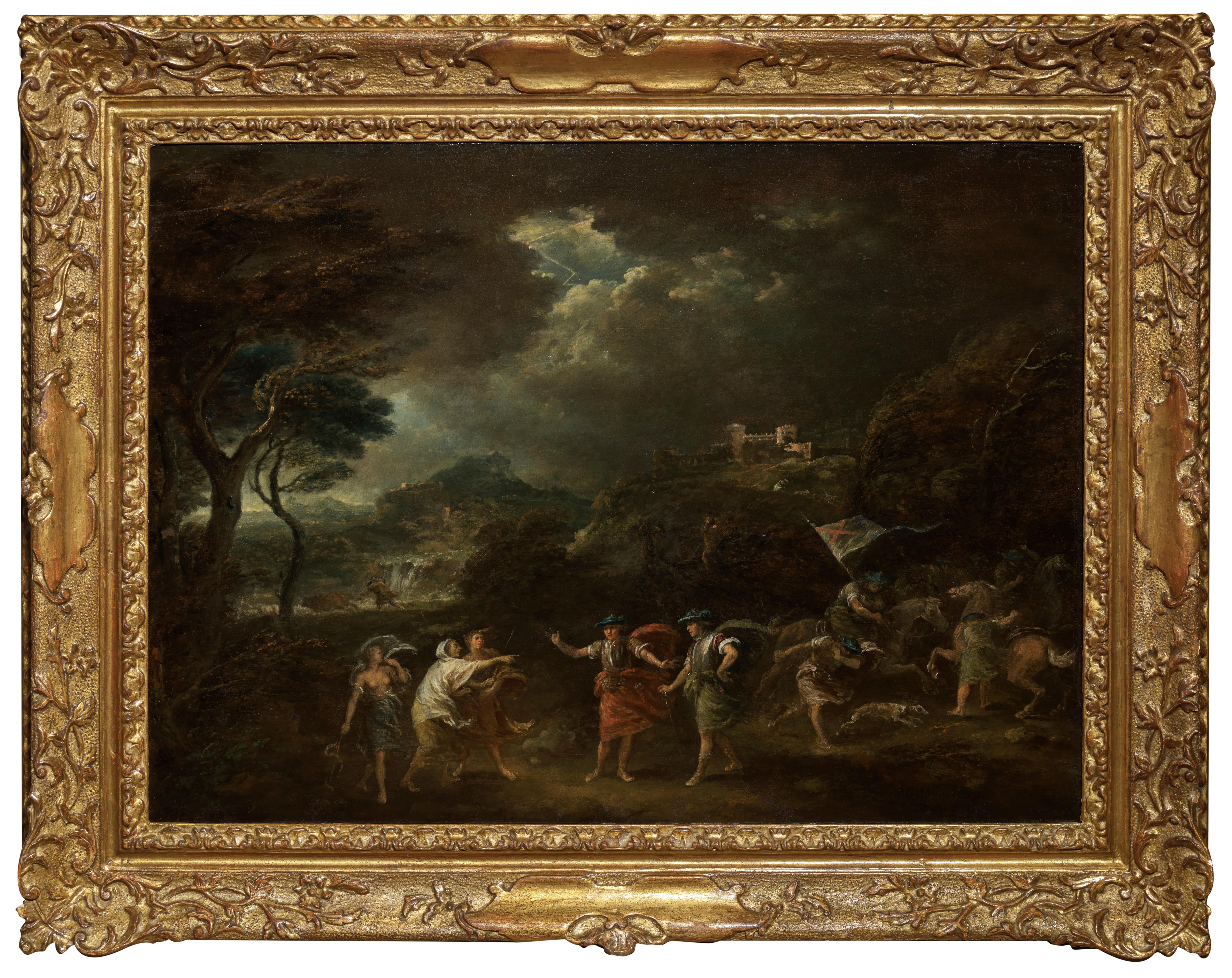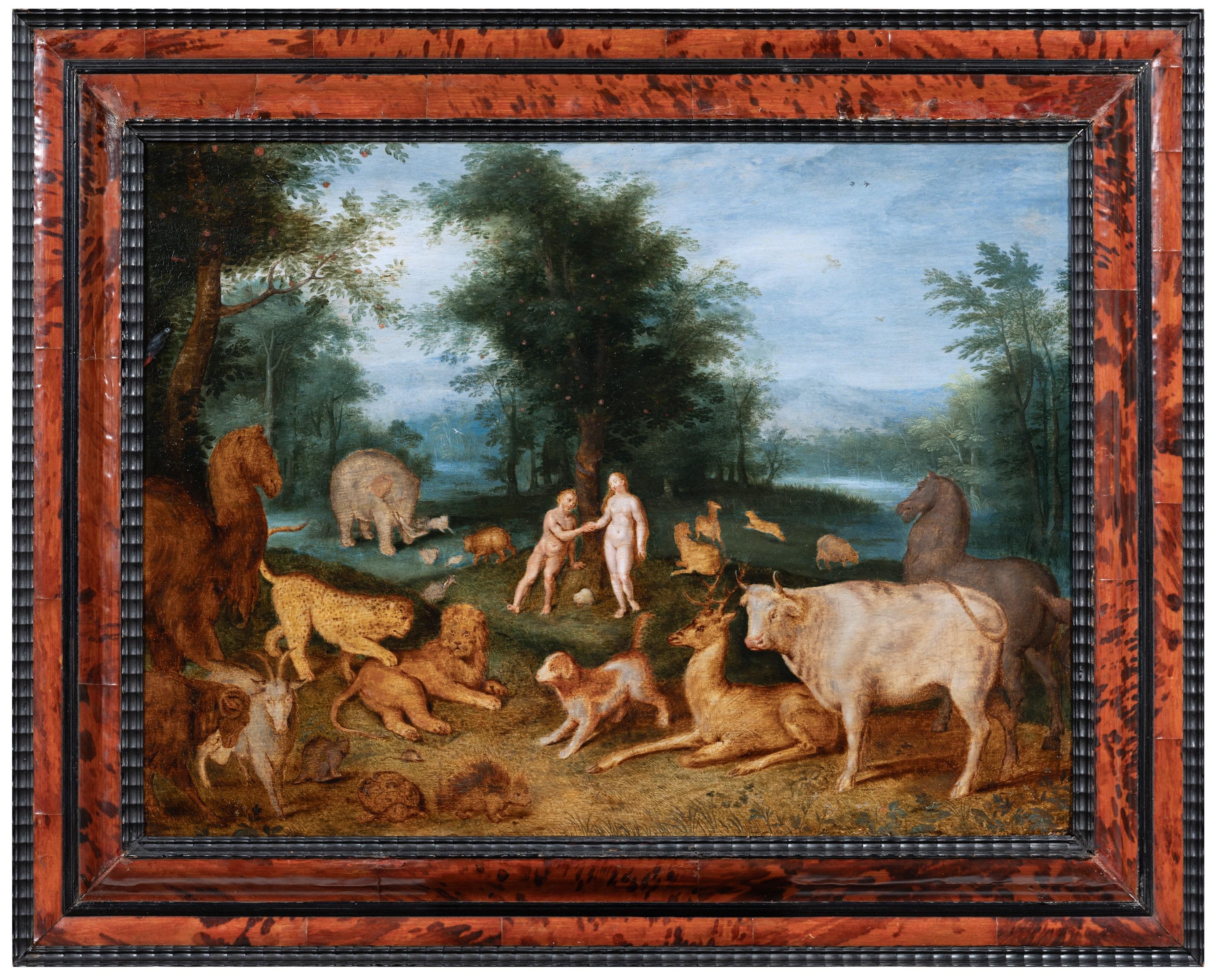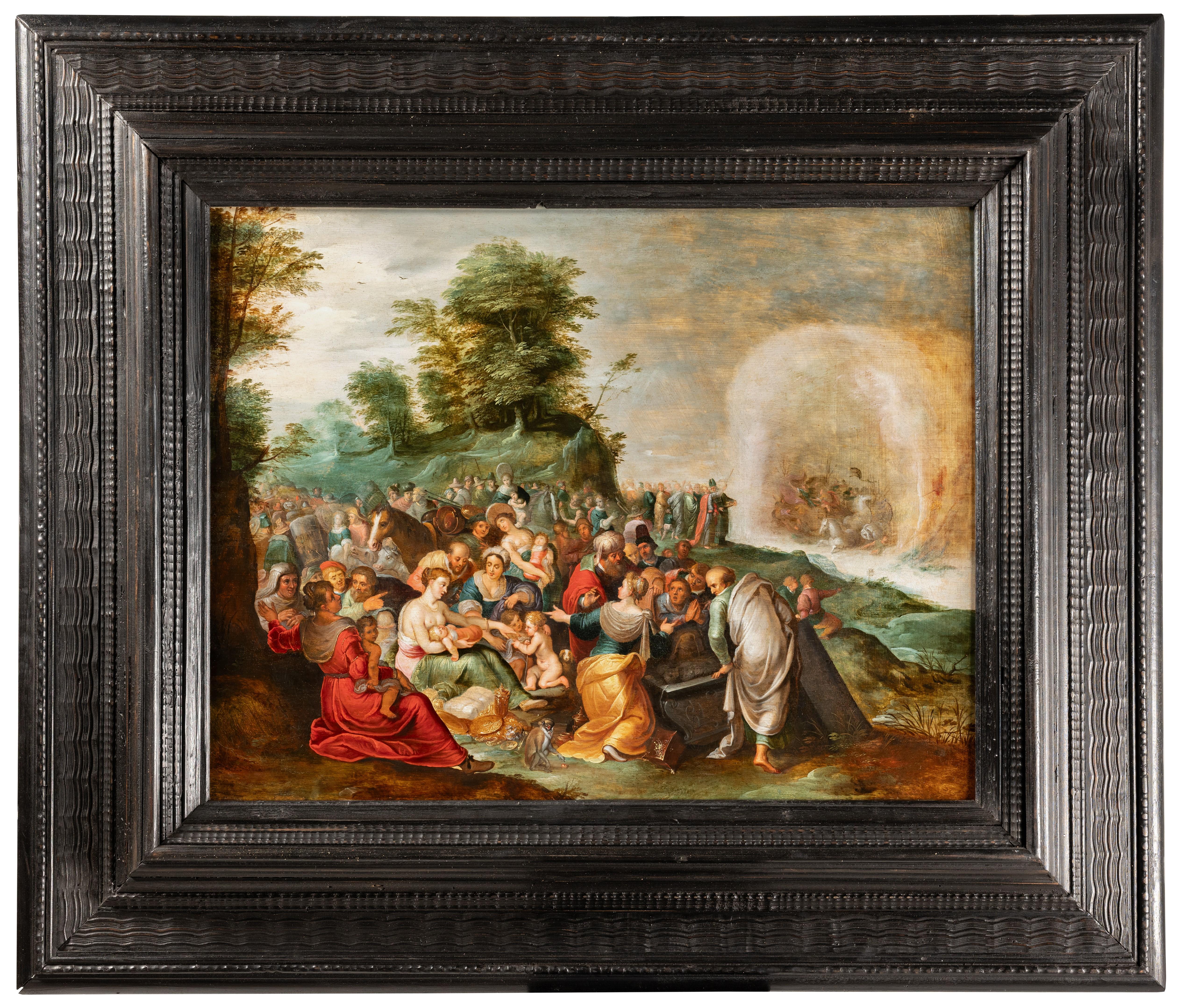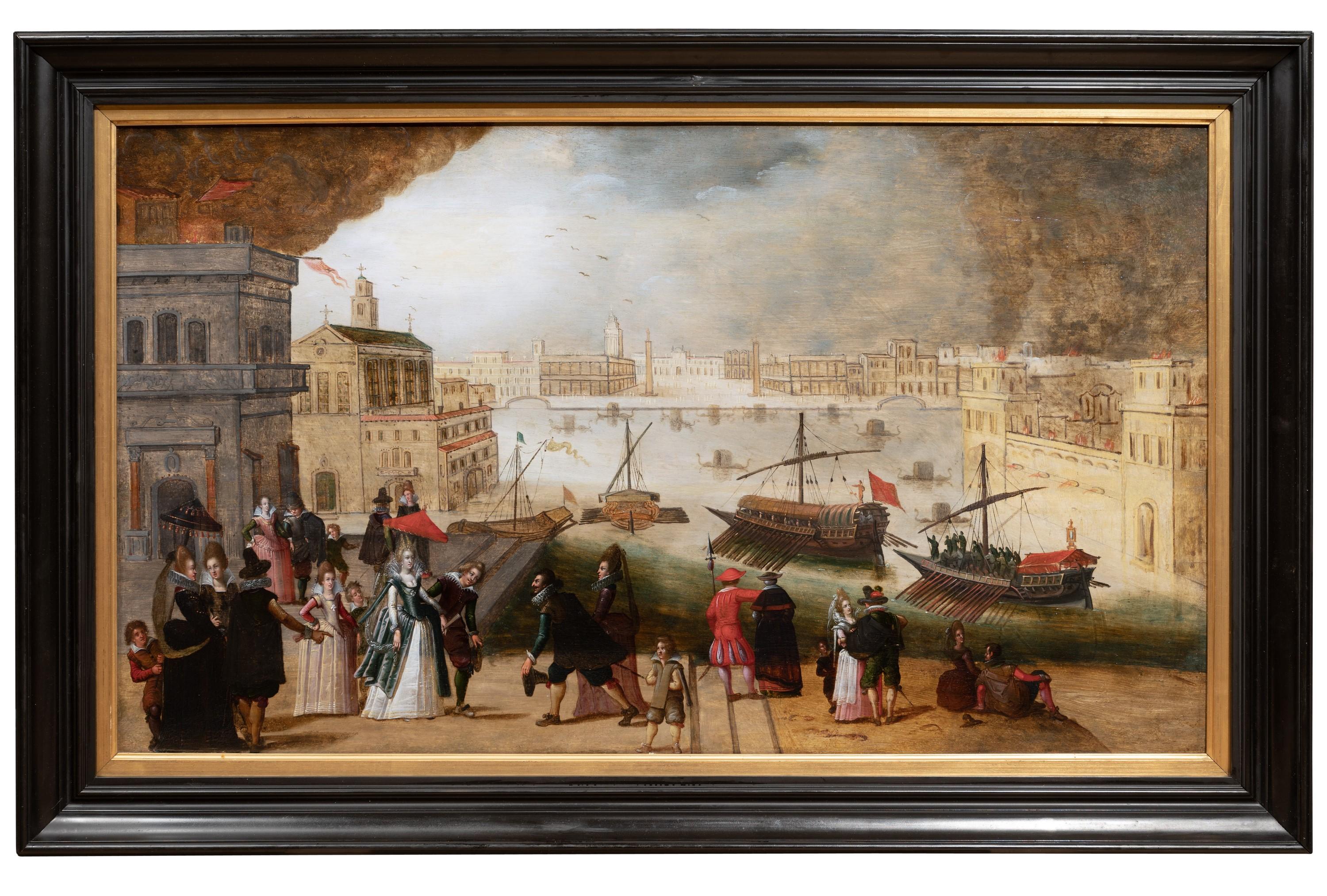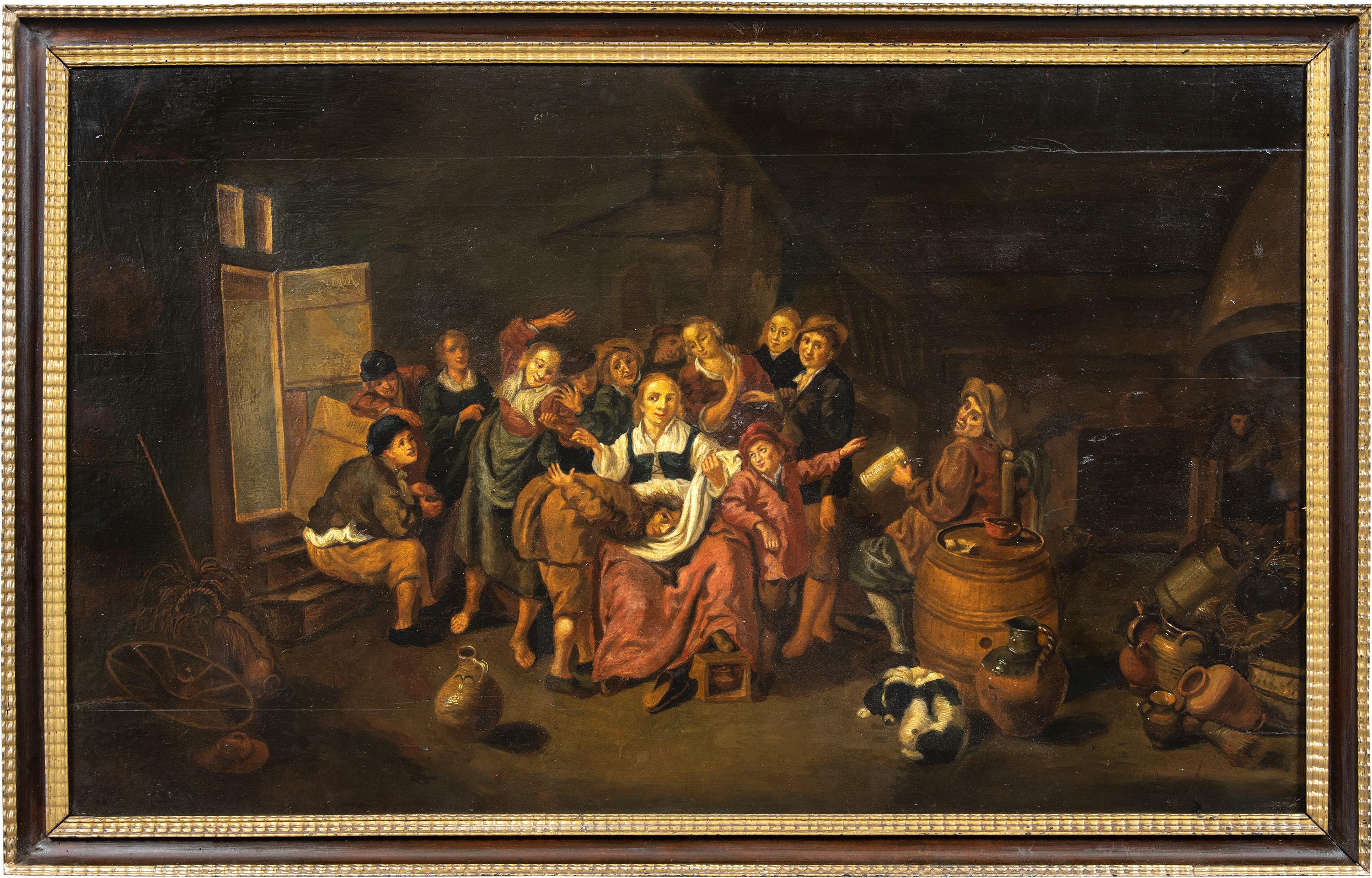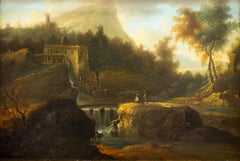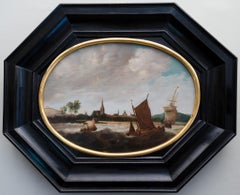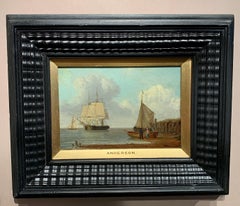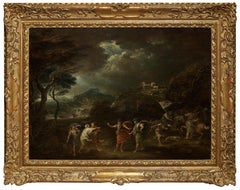A Winter Landscape With Skaters on a Frozen River, Dirck Dalens III (Circle)
View Similar Items
Video Loading
Want more images or videos?
Request additional images or videos from the seller
1 of 6
A Winter Landscape With Skaters on a Frozen River, Dirck Dalens III (Circle)1700s
1700s
About the Item
- Creation Year:1700s
- Dimensions:Height: 8.43 in (21.4 cm)Width: 11.7 in (29.7 cm)
- Medium:
- Movement & Style:
- Circle Of:Dirck Dalens III (1688 - 1753, Dutch)
- Period:
- Condition:The panel is uncradled, flat and stable. The paint surface is clean and the varnish is clear and even. The colours are strong and well-preserved. UV reveals scattered, minor retouching. In overall very good condition.
- Gallery Location:Stockholm, SE
- Reference Number:1stDibs: LU144527973582
About the Seller
5.0
Platinum Seller
These expertly vetted sellers are 1stDibs' most experienced sellers and are rated highest by our customers.
Established in 2020
1stDibs seller since 2020
115 sales on 1stDibs
Associations
International Confederation of Art and Antique Dealers' Associations
More From This SellerView All
- A Peasant Removing a Plaster: The Sense of Touch. By a Follower of David TeniersBy David Teniers the YoungerLocated in Stockholm, SEDavid Teniers the Younger (1610-1690) Follower of A Peasant Removing a Plaster: The Sense of Touch signed T on the table oil on panel panel size 7,20 x 5,55 inches (18,3 x 14,4 cm)...Category
Early 18th Century Old Masters Figurative Paintings
MaterialsOil, Panel
- Italian Landscape With Figures at a Waterfall by a Follower of Jan van HuysumBy Jan Van HuysumLocated in Stockholm, SEThere are so many details to fall in love with in this 18th-century painting depicting an Italianate landscape, for example, the delicately painted figures having a conversation and ...Category
Early 18th Century Old Masters Landscape Paintings
MaterialsOil, Wood Panel
$2,406 Sale Price20% OffFree Shipping - Dutch School, 17th Century, Shipping in a Stiff Breeze, a City BeyondLocated in Stockholm, SEWe are delighted to present a significant piece from the Dutch School, most likely dating back to the late 17th century. This captivating painting showcases the dynamic force of nature with three ships vigorously navigating through stormy waters. The foreground is a scene of nautical struggle, as figures are depicted working intensely with the sails, steering, and bracing against the tumultuous sea. In the serene background, the silhouette of a quaint town emerges, with spires from churches and the outlines of various buildings is visible. This juxtaposition of the calm town against the chaotic foreground serves as a powerful reminder of the unpredictability of life and nature. Dominating the canvas, the sky occupies two-thirds of the painting, filled with brooding clouds that occasionally break to reveal patches of blue. The presence of birds adds a dynamic element to the otherwise ominous atmosphere. While the artist remains unknown, the work is quintessentially Dutch in its execution, with meticulous attention to detail and a profound understanding of maritime life. The painting's oval shape is quite distinctive and is complemented by a suitably antique octagonal black frame, which adds to its historical charm. This piece is a testament to the mastery of Dutch maritime painting...Category
17th Century Old Masters Landscape Paintings
MaterialsOak, Oil, Wood Panel
$4,812 Sale Price20% Off - Landscape with Gentleman on Horseback and Peasant Woman Receiving AlmsBy Philips WouwermanLocated in Stockholm, SEWorkshop / Circle of Philips Wouwerman (1619-1668) Landscape with Gentleman on Horseback and Peasant Woman Receiving Alms oil on oak panel 12.40 x 14.17 inches (31.5 x 36 cm) wit...Category
17th Century Old Masters Landscape Paintings
MaterialsOak, Oil, Wood Panel
- A Wooded Landscape With Riders, Attributed to Pieter Gysels, Oil on CopperLocated in Stockholm, SEPieter Gysels, also known as Peeter Gijsels, was a renowned Flemish painter who lived from 1621 to 1690/91. He was known for his landscapes, which often depicted idyllic scenes from nature, and his works are highly sought after by Old Master collectors. We are proud to offer a newly discovered pair of landscapes attributed to him; this one called "A Wooded Landscape With Riders" This stunning painting captures the beauty of a serene summer day in the countryside. In the foreground, we see a couple riding on horsebacks, enjoying the peaceful surroundings. The horses seems to be trotting gently, and the riders are relaxed, taking in the natural splendour around them. In the distance, we see several other figures, perhaps farmers or peasants, doing their daily tasks. We also see a small stream flowing through the landscape, with several small houses. And in the background, we see a beautiful wooded area with tall trees reaching up towards the sky. The attention to detail in this painting is truly remarkable. Gysels use of vibrant colours evoke the warmth and beauty and he skillfully captured the play of light on the landscape, creating a sense of depth and atmosphere. The detailing of the cottages, the colors, the use of big-leafed plants in the foreground, and the figure types are typical of his signature style. "A Wooded Landscape With Riders" is painted on copper, which gives the painting a unique luminosity and depth. The use of copper as a support for paintings was popular in the seventeenth century. We also have one more painting called "Wooded Landscape With an Elegant Company...Category
17th Century Old Masters Figurative Paintings
MaterialsCopper
- Shipping in Stormy Waters, Attributed to Italian Artist Francesco GuardiBy Francesco GuardiLocated in Stockholm, SEThe splendour of the tragic sea Francesco Guardi and maritime painting in Venetian art No Venetian painter was a stranger to the sea. After all, Venice was not only one of the most prominent ports of the Mediterranean, but indeed a city literally submerged in the ocean from time to time. Curiously however, the famous Venetian school of painting showed little interest in maritime motifs, favouring scenes from the iconic architecture of the city rather than seascapes. That is why this painting is a particularly interesting window into not only the painter Francesco Guardi himself – but to the significance of the element of water in art history, in absence as well as in the centre of attention. Whether it be calm, sunny days with stunning views of the palaces alongside the canals of Venice or – more rarely – stormy shipwrecking tragedies at sea, water as a unifying element is integral to the works of painter Francesco Guardi (1712–1793). During his lifetime, Venetian art saw many of its greatest triumphs with names like Tiepolo or Canaletto gaining international recognition and firmly establishing Venice as one of the most vibrant artistic communities of Europe. While the city itself already in the 18th century was something of an early tourist spot where aristocrats and high society visited on their grand tour or travels, the artists too contributed to the fame and their work spread the image of Venice as the city of romance and leisure to an international audience, many of whom could never visit in person. Still today, the iconic image of Venice with its whimsical array of palaces, churches and other historic buildings is much influenced by these artists, many of whom have stood the test of time like very well and remain some of the most beloved in all of art history. It was not primarily subtility, intellectual meanings or moral ideals that the Venetian art tried to capture; instead it was the sheer vibrancy of life and the fast-paced city with crumbling palaces and festive people that made this atmosphere so special. Of course, Venice could count painters in most genres among its residents, from portraiture to religious motifs, history painting and much else. Still, it is the Vedutas and views of the city that seems to have etched itself into our memory more than anything else, not least in the tradition of Canaletto who was perhaps the undisputed master of all Venetian painters. Born into his profession, Francesco lived and breathed painting all his life. His father, the painter Domenico Guardi (1678–1716) died when Francesco was just a small child, yet both he and his brothers Niccolò and Gian Antonio continued in their fathers’ footsteps. The Guardi family belonged to the nobility and originated from the mountainous area of Trentino, not far from the Alps. The brothers worked together on more challenging commissions and supported each other in the manner typical of family workshops or networks of artists. Their sister Maria Cecilia married no other than the artist Giovanni Battista Tiepolo himself, linking the family to the most renowned Venetian name of the time. During almost a decade, Guardi worked in the studio of Michele Giovanni Marieschi, sometimes simply known as Michiel, a painted similar in both style and motif. Canaletto is, however, the artist Guardi is most often compared to since they shared a mutual fascination for depicting the architecture and cityscape of Venice. During the course of his career, Guardi tried his hand in many different genres. He was as swift in painting landscapes, Vedutas of Venice, sacred motifs, interiors and architectural compositions as he was in a number of other motifs. His style is typical of the Venetian school but also distinct and personal once we look a little closer. There is an absolute certainty in the composition, the choice of which sometimes feels like that of a carefully calculated photograph – yet it is also very painterly, in the best sense of the word: fluid, bold, sensitive and full of character. The brushwork is rapid, intense, seemingly careless and extraordinarily minute at the same time; fresh and planned in a very enjoyable mixture. His interiors often capture the breath-taking spacious glamour of the palaces and all their exquisite decor. He usually constructed the motif through remarkably simple, almost spontaneous yet intuitively precise strokes and shapes. The result was a festive, high-spirited atmospheric quality, far away from the sterile and exact likeness that other painters fell victim to when trying to copy Canaletto. The painting here has nothing of the city of Venice in it. On the contrary, we seem to be transported far away into the solitary ocean, with no architecture, nothing to hold on to – only the roaring sea and the dangerous cliffs upon which the ships are just moments away from being crushed upon. It is a maritime composition evoking both Flemish and Italian precursors, in the proud tradition of maritime painting that for centuries formed a crucial part of our visual culture. This genre of painting is today curiously overlooked, compared to how esteemed and meaningful it was when our relationship to the sea was far more natural than it is today. When both people and goods travelled by water, and many nations and cities – Venice among them – depended entirely on sea fare, the existential connection to the ocean was much more natural and integrated into the imagination. The schools and traditions of maritime art are as manifold as there are countries connected to the sea, and all reflect the need to process the dangers and wonders of the ocean. It could symbolize opportunity, the exciting prospects of a new countries and adventures, prospering trade, beautiful scenery as well as war and tragedy, loss of life, danger and doom. To say that water is ambivalent in nature is an understatement, and these many layers were something that artists explored in the most wondrous ways. Perhaps it takes a bit more time for the modern eye to identify the different nuances and qualities of historic maritime paintings, they may on first impression seem hard to differentiate from each other. But when allowing these motifs to unfold and tell stories of the sea in both fiction and reality – or somewhere in between – we are awarded with an understanding of how the oceans truly built our world. In Guardi’s interpretation, we see an almost theatrically arranged shipwrecking scene. No less than five ships are depicted right in the moment of utter disaster. Caught in a violent storm, the waves have driven them to a shore of sharp cliffs and if not swallowed by the waves, crushing against the cliffs seems to be the only outcome. The large wooden ships are impressively decorated with elaborate sculpture, and in fact relics already during Guardi’s lifetime. They are in fact typical of Dutch and Flemish 17th century ships, giving us a clue to where he got the inspiration from. Guardi must have seen examples of Flemish maritime art, that made him curious about these particular motifs. One is reminded of Flemish painters like Willem van de Velde and Ludolf Backhuysen, and this very painting has indeed been mistakenly attributed to Matthieu van Plattenberg...Category
18th Century Old Masters Landscape Paintings
MaterialsCanvas, Oil
$51,409 Sale Price20% OffFree Shipping
You May Also Like
- Moses and the Pillar of Cloud by Lucas Cranach the Elder and StudioBy Lucas Cranach the ElderLocated in New Orleans, LALucas Cranach the Elder and Studio 1472-1553 German Moses and the Pillar of Cloud Oil on panel Moses and the Pillar of Cloud is a bold and evocative composition that showcases the signature intense color and intricate detail of Lucas Cranach the Elder’s celebrated oeuvre. The remarkable 16th-century oil on panel by Lucas Cranach and his studio captures the narrative moment when Moses leads the Israelites out of Egypt and encounters God manifested through a large pillar of cloud. Moses stands at the precipice of a bridge and turns back to soldiers helping to lead the group of Israelites who huddle closely together. Cranach depicts Moses with his traditional iconography, rendering the rays of light on his head which came to be interpreted as "horns" in the translation of the Bible. Using his traditional walking staff, Moses gestures toward the pillar, seemingly acknowledging that God will protect the group as they cross the bridge to the other side, leaving exile and entering a promised land. In a nod to Cranach’s Germanic locale, he renders the figures and setting in a manner that feels decisively more akin to European aesthetics than those of the Red Sea. Soldiers wear elaborate, gothic suits of armor that recall the livery of Northern European guardsmen. The terrain appears more like a European forest giving way to a sweeping valley than the arid landscape the Israelites trekked through on their journey across the Red Sea. Though still clearly recounting a story from the Old Testament, Cranach renders the cast of characters and setting in an earthly, familiar manner. This aesthetic shift speaks to Cranach’s own changing beliefs as he found himself at the center of the Protestant Reformation. After first gaining recognition in 1505 as the official painter of Frederick the Wise, Cranach established a thriving painting and print studio in Wittenberg, Germany. Cranach was renowned for his court portraits and genre paintings and was also well known for his association with the famous protestant reformer Martin Luther, then under the protection of Frederick the Wise. As Wittenberg became a bastion of new religious thought, Cranach soon befriended Luther and played an active role in creating the printed materials that proliferated throughout the Reformation...Category
16th Century Old Masters Figurative Paintings
MaterialsOil, Panel
- Antique English 19th century marine sceneBy William AndersonLocated in Woodbury, CTOutstanding English late 18th / early 19th century marine scene by one of Britain's best known and sought after painters. William (or Wiliam) Anderson (1757 – 27 May 1837) was a Scottish artist specializing in maritime and patriotic themes. He was well-regarded for his detailed and accurate portraits of ships under sail, exhibiting his works annually in London between 1787 and 1811 and then occasionally until 1834. Anderson influenced other artists, notably John Ward and others of the Hull school. Anderson's early life is obscure, but he is known to have trained as a shipwright before moving to London to become a maritime painter when he was about 30. His training served him well as a painter, providing "a practical nautical knowledge" of his subjects. He earned a reputation for "accuracy and refinement of detail" and was admired for his bright, clear colours. He worked in both oils and watercolours. He based his style on that of well-known Dutch maritime...Category
1810s Old Masters Figurative Paintings
MaterialsOil, Wood Panel
$6,360 Sale Price20% OffFree Shipping - Macbeth and the Three Witches a Painting on Panel by Francesco ZuccarelliBy Francesco ZuccarelliLocated in PARIS, FRThis painting, created during Zuccarelli's stay in England, represents the decisive moment when Macbeth, together with Banquo, meets the three witches who announce that he will be Ki...Category
1760s Old Masters Landscape Paintings
MaterialsOil, Wood Panel
- Old master painting of Cherubs cavorting in a woodland settingBy Jean-Honoré FragonardLocated in Harkstead, GBA charming image of cherubs cavorting with sheaths of wheat in a woodland setting. Follower of Jean-Honoré Fragonard Cherubs cavorting before a tree Oil on panel 10¾ x 14 inches exc...Category
Early 19th Century Old Masters Landscape Paintings
MaterialsOil, Wood Panel
- Adam and Eve in paradise, studio of Jan Brueghel the Younger, 17th centuryLocated in PARIS, FRStudio of Jan Brueghel the Younger 17th century Antwerp school Oil on oak panel, h. 37 cm, w. 49 cm Tortoiseshell veneered baroque style frame...Category
Mid-17th Century Old Masters Figurative Paintings
MaterialsOil, Wood Panel
- The crossing of the Red Sea, 17th century Antwerp, studio Frans FranckenBy Frans Francken IILocated in PARIS, FRCrossing of the Red Sea Workshop of Frans Francken II (1581-1642) 17th century Antwerp School Oil on oak panel Dimensions: h. 49.5 cm, w. 64.5 cm (19.49 in x 25.39 in) Moulded and blackened wooden frame with wide mouldings, with inverted profile from the later period. Framed dimensions: h. 82 cm, w. 97 cm (32.28 x 38.19 in) Our panel illustrates one of the episodes of the Old Testament, recounted in the book of Exodus. After crossing the Red Sea...Category
17th Century Old Masters Figurative Paintings
MaterialsOil, Wood Panel
Recently Viewed
View AllMore Ways To Browse
Vintage French Oil Paintings
Antique Maritime Paintings
Antique Maritime Painting
Rodin Antique
Maritime Boat
Chapter Studio
M Henry Painting
Painting Of Chef
Notice Board
Regionalists Painting
New York City Landscape Impressionism Oil
Round Impressionist
Painting Wild Sea
Country Road Vintage
M Austin
British Marine Oil Paintings
Harbor Maine
Nh Paintings
